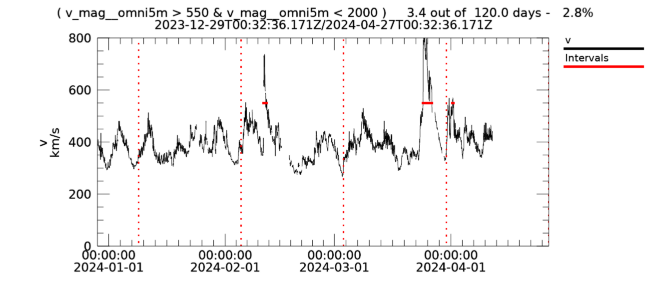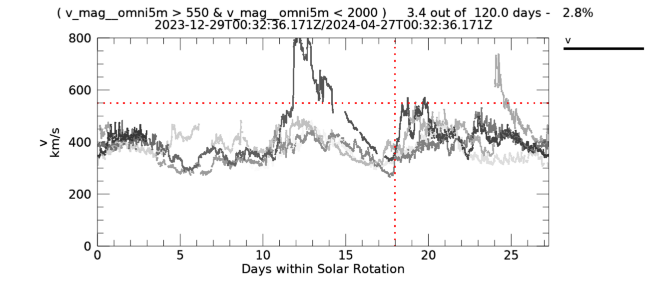Space Weather in the Solar System
Welcome to the Spacecraft Design - Space Weather in the Solar System service
Overview
The service "Spacecraft Design - Space Weather in the Solar System" aims to provide information supporting the specification and design of spacecraft that will operate within the heliospheric domain. These missions are primarily solar system science exploration missions but in future could include other missions such as space weather assets located away from the Earth (such as L4 and L5). The service area is also relevant to the heliocentric orbits close to the earth (such as L1 and L2). Many of the products specified in the near-Earth spacecraft design services (Environment Specification Archive, Environment In-orbit verification and Post Event Analysis) are also relevant here although in some cases will need to be scaled according to the specifics of the interplanetary trajectory and heliospheric target. This information includes statistics on the space environment (background solar wind and transient features including coronal mass ejections, stream interaction regions and solar energetic particles as well as solar UV).
This service is implemented through a combination of products and tools which can be found through the following sections along with expert support provided by the teams constituting the SWE Network. Should you require further guidance in the use of this service, or have specific questions about any aspects of the service presented here, don't hesitate to contact the Helpdesk.
Read more about this serviceHighlights
Announcements
💡 Let us know what you think about our services in our Survey.
Products and Alerts
The products provided for this service consist of access to archives and reconstructed information on 1) Solar Activity; 2) Interplanetary Medium at L1; 3) Interplanetary Medium Outside L1 and 4) Alerts related to these domains. The Solar activity provides the driver for space weather effects within the solar system and on planetary environments. The L1 and Outside L1 products provide historical data on the enviroment at those locations. No real-time alerts are associated with this service since it is targeted at design activities, the available archives of alerts are provided within the products section.The tools that are currently provided support 1) Access to space environment tools that can help to predict the likely environment to be encounted; 2) Archive and data mining tools.Products
Solar Activity: Data Archive
Solar Flares
- SIDC Solarmap
- UGraz/KSO Solar flare detection archive
- UGraz/KSO Halpha light curves archive
- SIDC Solar flare forecast archive
- FLARECAST Solar flare forecast
- A-EFFort Solar flare forecast archive
- SIDC Solar EUV flare detection archive
- ASUCAS/SPS Solar flare forecast archive
- SIDC Moderated Solar Weather Event list archive
- ASUCAS/SPS Daily space weather bulletin archive
CMEs
CME propagation forecast
Coronal Holes
Solar Disc Magnetic Fields
International Sunspot number
Smoothed Sunspot Number (SSN, R12)
10.7cm Solar Radio Flux (F10.7)
Solar EUV Index (S10.7)
Solar EUV Index (E10.7)
No product available in this category yet
Solar FUV Index (M10.7)
Solar X-ray & UV Index (Y10.7)
Ionospheric Index (IG12)
EUV Images of Sun
- Magnetic Connectivity Tool
- Synchronous synoptic maps of the solar corona in the UV and extreme-UV - Nowcast
- Synchronous synoptic maps of the solar corona in the UV and extreme-UV - Archive
- Synchronous synoptic maps of the solar corona in the UV and extreme-UV - Forecast
- Maps of thermal properties of the corona
- Proba2/SWAP Level 0 quicklook image archive
- Proba2/SWAP Media level image archive
- SIDC Solarmap
- SDO/AIA Solar EUV image archive
White Light Solar Imaging
- Synchronous synoptic maps of the photosphere - Nowcast
- Synchronous synoptic maps of the photosphere - Archive
- Synchronous synoptic maps of the photosphere - Forecast
- ASUCAS/SPS White light Solar images archive
- SIDC Solarmap
- SIDC/USET White light Solar images archive
- UGraz/KSO White light Solar images archive
- INAF/OACT White light Solar images archive
H-alpha Images of Sun
Soft X-ray Images of the Sun
No product available in this category yet
Solar EUV Images Outside of Sun-Earth Line
Solar Coronagraphic Images Outside of Sun-Earth Line
No product available in this category yet
Solar Far-side Maps (using helioseismology technique)
No product available in this category yet
Ly-alpha Images
No product available in this category yet
White-light wide-angle Coronagraph Images
No product available in this category yet
Solar Radiospectrographic Observations
Solar X-ray Flux
- GOES/SEM X-Ray Sensor datasets on SEDAT
- Proba2/LYRA Rescaled data archive
- UGraz/KSO Halpha light curves archive
Solar EUV Integrated Flux
Solar UV Flux
Long-term Solar Activity
No product available in this category yet
Heliospheric Imaging of Sun-Earth Line
- Archive - STEREO-A HI Beacon Mode Background Subtracted Difference Movie [STA/DMvRT]
- Archive - STEREO-A HI Time Elongation J-Maps (Beacon Mode) [STA/JMpRT]
- Archive - STEREO-A HI J-Map Annotated (Beacon Mode) [STA/JMPAR]
- Archive - STEREO-A HI Background Subtracted Movie (Science Mode) [STA/BSMv]
- Archive - STEREO-A HI Background Subtracted Difference Movie (Science Mode) [STA/DMv]
- Archive - STEREO-A HI Time Elongation J-Map (Science Mode) [STA/JMp]
- Archive - STEREO-A HI J-Map Annotated (Science Mode) [STA/JMPA]
Interplanetary Medium at L1: Data Archive
High Energy >10 MeV Protons
- Automated Multi Dataset Analysis (AMDA)
- Statistical long-term plasma products - L1 p>10MeV
- SPENVIS Short-term solar particle models
- SPENVIS Long-term solar particle models
- SPENVIS Galactic cosmic ray models
- Herschel/SREM dataset on SEDAT
- Planck/SREM dataset on SEDAT
- Herschel/SREM radiation rates
- Planck/SREM radiation rates
- Very high-energy solar energetic proton fluence
- Very high-energy solar energetic proton peak flux
- Solar very high-energy particle event catalogue
- HESPERIA RELeASE
- HESPERIA UMASEP-500
- Very high-energy solar proton event database
- EDRS-C/NGRM L2 Proton differential fluxes
High Energy >10 MeV/nuc Ions
- Automated Multi Dataset Analysis (AMDA)
- SPENVIS Short-term solar particle models
- SPENVIS Long-term solar particle models
- SPENVIS Galactic cosmic ray models
- ACE/SIS dataset on SEDAT
- Raw ACE/EPAM ions, e, He, O, Fe channels in SEPEM
- Raw ACE/SIS data in SEPEM
- High-energy solar heavy ion peak flux model
1-10 MeV Protons
1-10 MeV/nuc Ions
0.03-1 MeV/nuc Ions
2-50 MeV Solar Electrons
30 keV-8 MeV Electrons
Interplanetary Magnetic Field (IMF)
Solar Wind Bulk Velocity
- SWiFT
- Archive - Solar wind model for Earth [WSA-Enlil]
- Archive - Solar wind model for Earth [ESWF]
- Archive - Solar wind model for Earth [STA+CH]
- Archive - Enhanced 24 hour solar wind forecast [AWR_NXT]
- Archive - Solar wind model for Earth 24 hour optimised [ESWF24]
- Archive - Solar Wind Forecast Speed Comparison [SWFSC/E]
- Automated Multi Dataset Analysis (AMDA)
- Statistical long-term plasma products - Solar Wind Speed
Solar Wind Bulk Density
Solar Wind Temperature
Activity at L1
No product available in this category yet
Interplanetary Medium Outside L1: Data Archive
CME propagation forecast
Solar Energetic Particle Events
- Automated Multi Dataset Analysis (AMDA)
- HELIOS-A and HELIOS-B E6 and E7 datasets on SEDAT
- Rosetta/SREM dataset on SEDAT
- Rosetta/SREM radiation rates
- Raw HELIOS1 and Helios2 E6 and E7 data in SEPEM
Interplanetary Medium Data
- Solar wind propagation tool
- Magnetic Connectivity Tool
- Shock tool
- Archive - Solar wind model for Mars [WSA-Enlil]
- Archive - Solar wind model for Mercury [WSA-Enlil]
- Archive - Solar wind model for Venus [WSA-Enlil]
- Archive - Magnetic Connectivity Tool Forecast [MAGCTOOL]
- Automated Multi Dataset Analysis (AMDA)
- AMPTE-UKS dataset on SEDAT
- HELIOS-A and HELIOS-B E6 and E7 datasets on SEDAT
Alerts: Data Archive
Solar Flare Detection
Solar Flare Detection and Location
CME Onset
CIR Alert
Geomagnetic Storm Warning / Solar Wind Shock Arrival
Tools
User Manual
The particular space environment considerations for solar system missions depends on the heliospheric trajectory and solar system target(s) relevant to the mission. These include solar energetic particle radiation, plasmas and micro-particles and additionally trapped radiation and atmospheric effects where relevant to planetary bodies with magnetospheres and/or atmospheres.
MoreInterruptions
None
 →
→ 
 →
→ 
